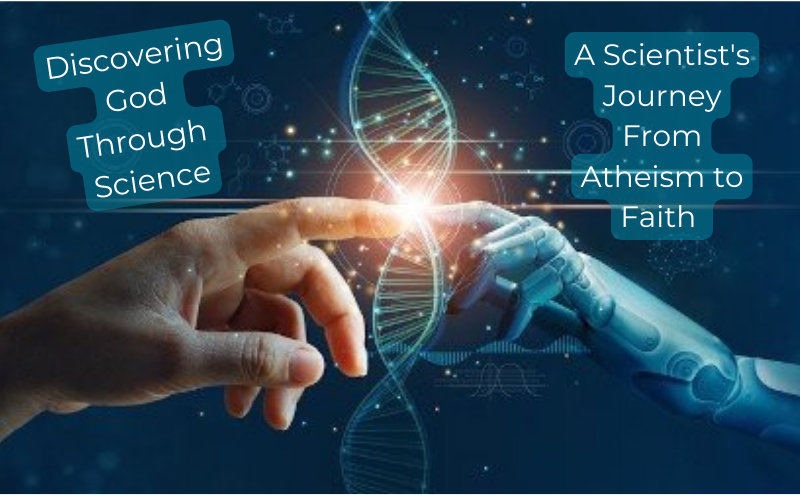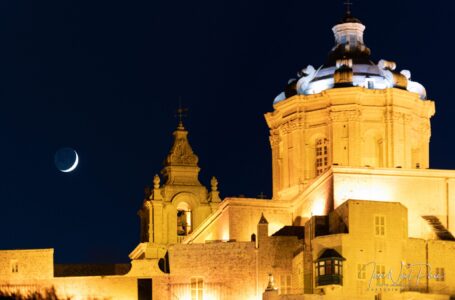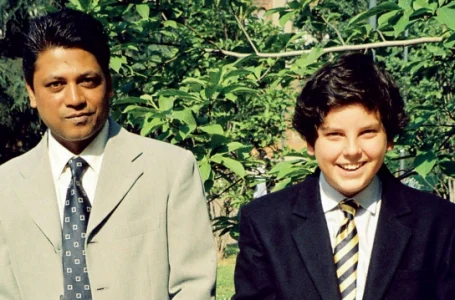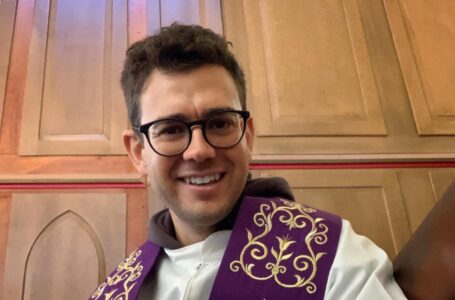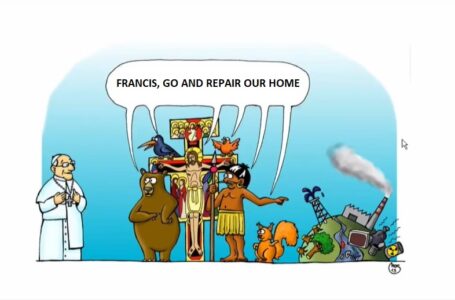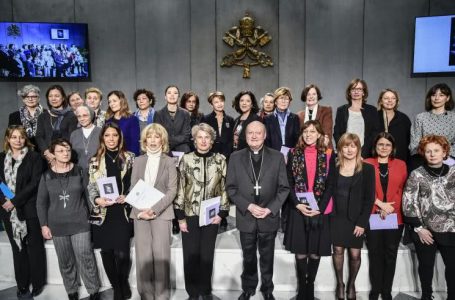Astronomy and Faith
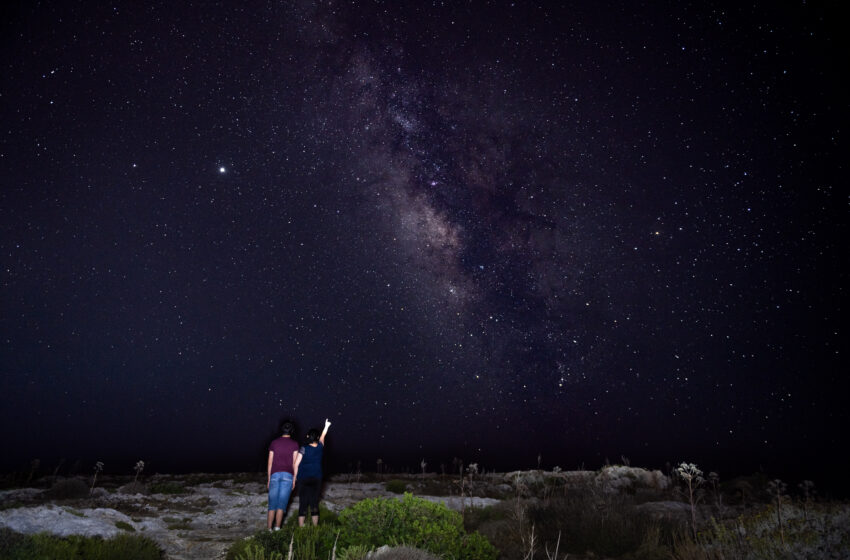
The Milky Way from Dingli Cliffs, Malta. Photo: Ian Noel Pace
In this interview, Dr Anthony Vella, a vet by profession, shares his passion for astronomy and faith and how these two sustain each other. Dr Anthony Vella is qualified in astronomy and theology.
As a young boy, Anthony used to put a pillow on the roof and look at the Milky Way with his naked eye. One day he didn’t see it anymore. A new airport was built a few kilometres away from his home and there was too much light pollution for him to be able to see the galaxy. Since his childhood days, Anthony’s interest in astronomy kept growing. Today, he mostly enjoys looking at the planets, observing their different colours and their positions. He is also fascinated by the moon with its craters and its shadows.
What is the universe made up of?
The “universe” refers to everything that there is in space – our Earth, all the other planets, the stars and all that exists in outer space. “The universe consists of three main components, most of which are still unknown to us. We can see and know about only 5% of the universe; the planets, the moon, the sun, and the galaxies which are made of stars. 25% of the universe is dark matter. Dark matter cannot be seen directly because it does not emit light. We know that dark matter exists because of the gravitational effects it has on visible objects. There is the hypothesis that dark matter is made up of weakly interactive massive particles (WIMP), which still need to be identified. The rest is dark energy, which makes up 70% of the universe. Dark energy helps the universe to expand. It is not seen directly or indirectly.”
It was a Catholic priest, the Belgian scientist Fr Georges Lemaître, who came up with the Big Bang theory. “An explosion of great heat created new atoms. This happened 13.8 billion years ago. The first stars were formed 200 million years from the Big Bang”, explains Anthony
What is astronomy?
“The word ‘astronomy’ which is derived from the Greek language, is the study of those elements which are in the universe, outside the Earth’s atmosphere. It includes the planets, the stars, the moon, comets, galaxies, dark energy and dark matter. Practically astronomy is the study of all that one can see from the Earth. Astronomy is the science which studies what these objects are made of and how they evolve. It is the frontal lobe of science and one of the oldest sciences. Astronomy is the place where you interpret and confirm mathematical and scientific ideas”, says Anthony.
Anthony explains that there are two main sections in the study of astronomy. “First, there is astrometry. This involves the measuring of positions and movements of spatial objects. This section of astronomy also studies how much, and what type of light these objects emit. The type of light measured – white or yellow – also indicates the temperature of that particular object. Astrometry is about applied maths. The second section is astrophysics. Astrophysics investigates the physical and chemical substances of these objects. It investigates what makes up the stars.”
Different astronomers specialise in different areas of study. Some astronomers observe the planets. Others observe the stars, the moon, the sun, the galaxies, the cosmos, and the beginning of the universe. Some astronomers work on the theoretical aspects of astronomy. They use specialised computers to create models to develop theories on how certain systems which exist today, will eventually develop in the future. Meanwhile, other astronomers are interested in astrophotography. They take photos of spatial objects and new objects which they see.
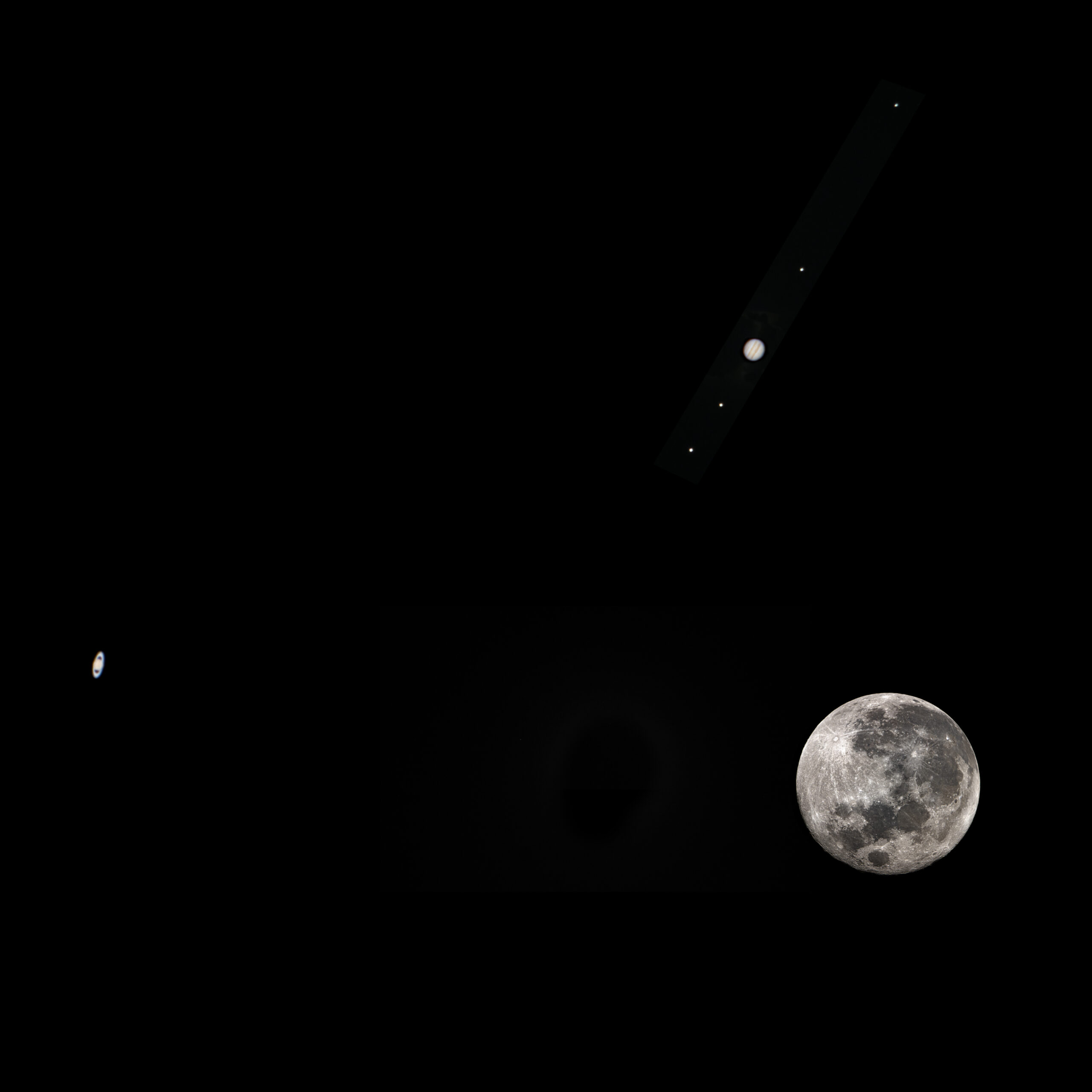
The difference between astronomy and astrology
Anthony explains that one should not confuse astronomy with astrology. “Humans have always observed the stars. They tried to organise, classify and understand their significance in their life. Ancient civilisations divinised these stars. They organised them in constellations – patterns of stars – which can be observed throughout the year. There is nothing scientific in the descriptions we see in certain magazines about the positions of various constellations like Pisces, Aries, Libra. Astrology is not science.
What is the purpose of astronomy?
In the past, astronomy helped people find their way by observing the position of the stars. “Man has used the stars for navigation for many years. For example, the North Star guides sailors when navigating at sea”, explains Anthony. Astronomy also helped farmers understand time before calendars were created. In the past, the farmers observed the sky to understand the seasons for planting.
Today, astronomy helps us learn more about Earth by understanding what is happening outside our world. “For example, the planet Venus has a temperature of 468 degrees Celsius because of its greenhouse gases. There is nothing romantic on Venus! These high temperatures can even melt lead. Thus, as we scientifically investigate Venus, we learn about the effects of global warming on Earth.” says Anthony.
Astronomy also helps us to find out the age of the Earth and try to understand the mysteries of the universe. “Man has always been asking certain questions: How long will Earth last? Where did the universe come from? If the universe had a beginning, what was there before it? What is outside the universe? Where are we from? What is the future of the Earth and the universe? Where will we end up? Where are we going? What is our destiny?”
Discoveries made in astronomy applied in daily life
Anthony illustrates the purpose and the fruit of astronomy in our daily life. Astronomy was vital in creating the MRI scanner, PET scans, and the GPS which gives the exact position through satellites. Other daily uses from applying what was discovered in astronomy include the microwave oven, which was developed during experiments performed at the ISS (International Space Station), solar photovoltaic panels, X-rays for baggage checks and gas chromatography to scan for bombs and drugs in airports. Artificial limbs are another invention which was originally created for space exploration. This technological innovation was originally designed for space vehicles. Another example is the scratch-resistant lenses that were originally developed for NASA’s scratch resistant astronaut helmets. Moreover, the Goddard Space Flight Centre created systems to monitor astronaut’s vital systems, which were then adapted in an insulin pump that regulates blood sugar levels and release of insulin.
Do countries work together in the field of astronomy?
Astronomy is a science that unites and brings scientists and countries together. Anthony explains that many nations are proud of these technological achievements. “There is a lot of competition between different countries to use the technology developed in the field of astronomy. Countries spend considerable amounts of money in this field, even where there is great poverty. Moreover, this passion for scientific research has brought many countries together. Countries work together in this field even if they do not agree on other matters. Such an example is found in France where an extensive research project involving different countries, is trying to produce energy similar to that of the sun. Europe, America and China are all involved in this project.”
Astronomy and the Catholic Church
The Church has had an interest in astronomy for a long time. During the Medieval period, in the European Universities run by the Church, mathematics and astronomy were always part of the curriculum. In 1891 Pope Leo 13th created the Vatican Observatory as a sign of the Catholic Church’s interest in this science. Today, the Vatican Observatory headquarters of the Catholic Church is located at the papal summer residence in Castel Gandolfo, outside Rome. There is also an associated research centre at the University of Arizona, in the United States.
The Jesuits have always and are still running both locations. At the time of Pope Leo 13th, the Church wanted to tell scientists, ‘Do not be afraid of religion’. Today it is the other way round. Nowadays we need to tell believers: ‘Do not be afraid of science’. It is unhealthy to create a taboo around science. Science does not lead us away from our faith. On the contrary, science can help us discover many things which ultimately God has created,” says Anthony.
Anthony does not see any conflict between science and faith. “It is very clear in my mind; astronomy and faith are two sides of the same coin. When I see something in the universe which fascinates me, I see more so God’s greatness in his creation. Pope John 23rd said that astronomy is like a small bridge between the world of science and the Church. Over the years, the Church has had many famous astronomers who were priests.”
Galileo and the Catholic Church
I asked Anthony on his view on the episode of Galileo Galilei and the Catholic Church. He said, “The episode of Galileo Galilei has to be read in its historical context. One also has to consider the people involved in the episode at the time. Yes, the Church took the wrong approach with Galileo. That is why, in 1992, Pope John Paul 2nd issued an apology with a formal statement through the Pontifical Academy of Sciences. The Church wants to walk in the truth. By recognising the mistakes of that time, she is also recognising the truth and wanting to move forward. This is an important step. How many people and institutions are ready to admit their wrongdoings because they want to walk in truth and move forward? The Catholic Church did”, replies Anthony.
The connection between faith and astronomy
Anthony remarks that when he looks at the skies in the evening he becomes more aware of the beauty and the mystery of the skies. He says that this observation is also part of his faith: “I build my personal faith on that of the apostles. The apostles saw Jesus. They lived with him, they saw him die on the Cross and rise from death after three days. I am amazed at the idea of God’s decision to become matter; to become one of us. Moreover, he died and rose again. Jesus’ incarnation into a man of flesh and blood, is a concrete way of how we can see God. When I look at the skies, it makes me want to say how great God is and how small I am. It helps me realise God’s greatness.”
Anthony describes the following as an example. In May 2019, laser detectors in Italy and the USA absorbed light that made astronomers realise that there was an explosion between two black holes which created a shock wave. This happened 7 million years ago, however, it was only last year that we detected its shock wave. Other examples include the following facts. The Earth was formed around 4.5 billion years ago. Additionally, there are approximately 200 million galaxies in the universe and 100 billion different solar systems. Moreover, our galaxy the Milky Way, has a diameter of around 180,000 light years (one light year is equivalent to 9.5 trillion km).
God’s Greatness in the universe and our smallness
“When I consider these limitless dimensions of time and all the great distances, I become more aware of my human smallness”, says Anthony. “I then ask myself… How great and how old is God’s love when compared to the oldest star? How great and wide is God’s love compared to the width of the universe? We might be unfamiliar with these concepts because we relate to our own height and weight. We know a world of dimensions. However, when I see these realities in the universe they become a sign of God’s veiled presence; God, who is without dimensions. I’m not surprised that St Ignatius used to feel great consolation when looking at the sky!”
Anthony also comments on the order which we find on Earth. This is in great contrast with what we find outside our solar system. “Earth is a very particular place and so is its position in the solar system. One of its particularities is that only on Earth do we find tectonic plates which cause earthquakes. These plates create energy and give life. Furthermore, if the Earth were closer to the Sun it would be too hot, like Venus. Conversely, if it was a bit farther it would be too cold, like Mars.”
“In our solar system there is a sense of order and harmony, like the seasons. Once you go outside our solar system, you only find chaos. So far, Earth is the only place where there is life as we know it. A lot of research is being carried out to find whether there are other planets that can sustain life. I cannot ignore the possibility that there is life elsewhere in the universe. Who am I to put God in a box?”
Read more:
– Famous Catholic Astronomers
– Top Popes’ Quotes About Science
